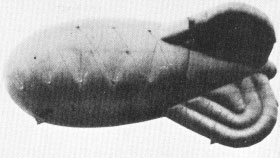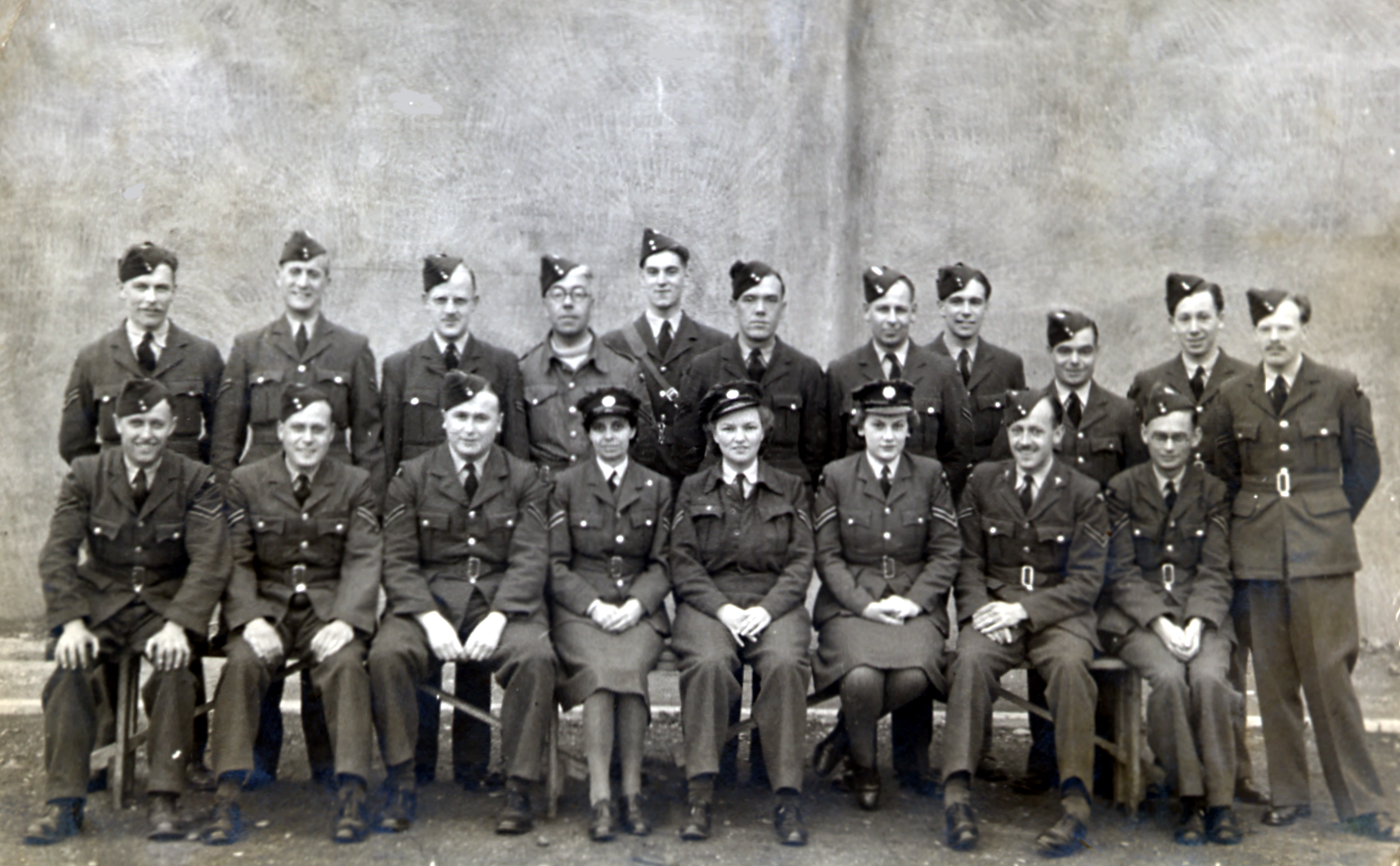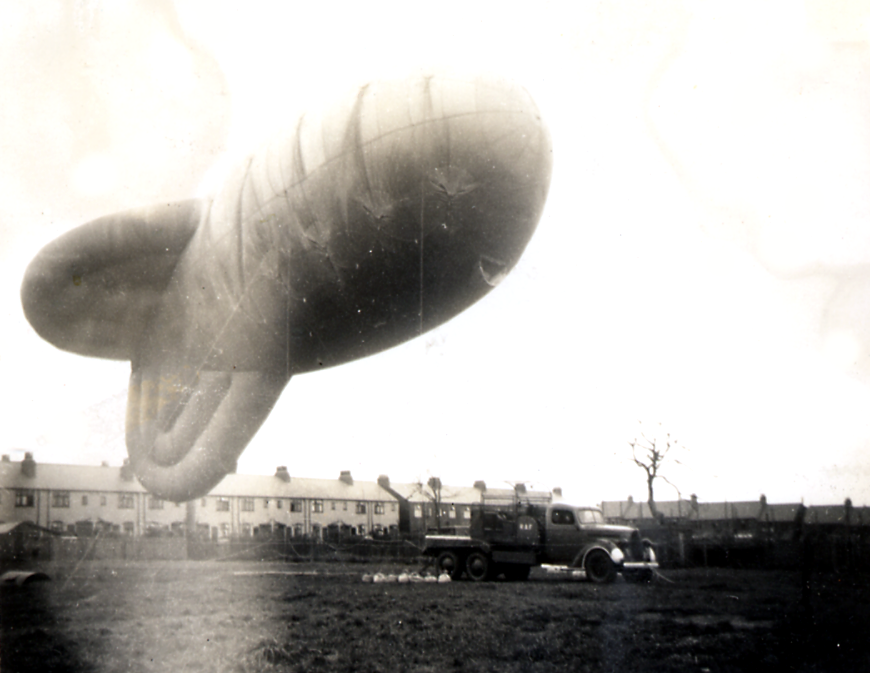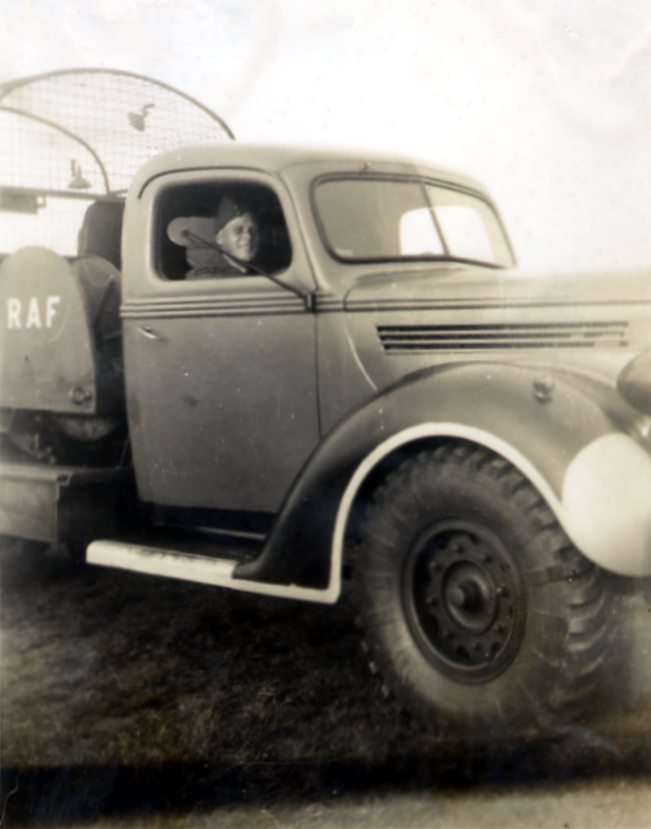 Click for Site
Directory
Click for Site
Directory Click for Site
Directory
Click for Site
Directory1009604 Leading Aircraftman Henry Maurice Rowland
Martin Rowland has kindly sent in the following photographs of his father, Henry Maurice Rowland, in 916 and 952 Squadron:




The snow squall had passed and now the green waters of the estuary danced less boisterously to the lowered tempo of the wind. A drifter, just back from her lawful occasions, nuzzled against the granite blocks of the quay. The veteran at the wheel thrust an unshaven face out of the tiny wheel-house and sniffed appreciatively, though whether he was scenting the warmth from the coals in his own hearth or the scarcely less inviting odour of the nearest bar-parlour I could not be certain.
I looked out a mile or two beyond the edge of the jetty and the splintered bulwarks of the drifter … out on to an island nation at war. Out there in the fitful winter sunlight a score and more of merchantmen were curtseying to their anchors. And around them and among them were their escorts, the once-grey ships of His Majesty’s Navy now looking almost carnivalesque in the camouflage. The convoy would soon be leaving its anchorage to sail out to face the mines and the submarines, the E-boats and the dive-bombers.
Yet here – here in the estuary – they seemed to wear a confident air of security. And that security was in the main, provided by the curtain of taut steel cables that stretched thousands of feet into the wind-blown clouds above the estuary mouth – the balloon barrage that, from a short distance away, appeared to rise from the sea itself.
A few years ago, in those complacent days of uncertain peace, I made a winter trip to one of our lightships. I wrote then that the men who kept the light going day and night through the worst weather that the North Sea can provide have the world’s toughest job. Now that I have visited one of our water-borne balloon barrage units, I wish to retract that statement.
I talked to the Commanding Officer of the RAF balloon site squadron in his office high up in a building overlooking the waters of the estuary. It was he who made it clear to me just how important a part the oft-disparaged “gas-bag boys” play in bring the food to our tables and the raw materials to our armaments factories.
This particular balloon-site squadron has three main jobs of work: to provide and maintain a barrage across the mouth of the estuary to guard what is an important convoy anchorage against enemy mine-laying and dive-bombing attacks; second, to supply all merchant vessels in the convoys – together with their naval escorts – with balloons; and, finally, to provide balloons for a flotilla of mine-sweepers. This work is done from bases situated at strategic points in the estuary, and this one squadron handles approximately a thousand balloons a month.
It will be seen that the balloon protection provided is of two types; the more or less “fixed” barrage consisting of balloons flown from moored barges and drifters which can nevertheless be moved to alternative positions; and those flown from minesweepers, merchant vessels and their naval escorts while they are actually under way.
In connection with this latter type of protection one flight of the squadron is engaged solely in flying balloons on convoys. Some of the merchant vessels and the warships fly a smaller type of balloon and these are controlled not by RAF men – but by the crews of the ships concerned. When the convoy has reached its destination – usually some large port further round the coast, the balloons are removed, thoroughly examined and – if necessary – serviced, and then fitted to the ships of a “return convoy”.
But it was with the men – not of the convoys – but of the “fixed” balloon barrage with whom I had most interest. I could guess at the hazards and – infinitely worse – the deadly monotony of the calling. I could guess at long days and nights within sight and, almost, sound of shore, yet cut off from the amenities of life by a stretch of storm-tossed, cold blizzard-swept waters. I could guess at much more, but – at the suggestion of the commanding officer – I was able to see for myself.
A high-speed RAF launch took me across the intervening waters to where the drifter Constant Hope heaved sluggishly in the freshening wind. A Leading Aircraftman welcomed me aboard the tiny craft which, six and a half days out of every seven is the home that he shares with two RAF assistants and four civilian members of the crew. And down in their cramped living quarters, where the cheerful bubbling of a saucepan of the galley fire helped to deaden the howling of the wind across the taut balloon cable above, he told me, simply, about his twenty-seven months aboard the Constant Hope.
He told me about that night last spring when a German plane dropped out of the low cloud and loosed its load of bombs almost directly above them. The nearest fell only a few yards off the Constant Hope’s port beam. For a moment it seemed as if the drifter would roll over as the blast of the explosion caught her. Her hatchways were blown off, the lights went out, and – as bomb-splinters thudded into her hull, a great spout of upflung water swept her decks.
The Constant Hope’s crew, convinced that the drifter was badly holed, attempted to launch the boat … and found that it was riddled with shrapnel. “So we stayed aboard,” said the Leading Aircraftman, with a grin, and proudly surveying the tiny cabin – “the old girl still floats.”
And then he told me about another night last winter when the Germans made a mass mine-laying attack on the estuary. Between twenty and thirty machines came over that night and for hours the tight-lipped helpless crews of the moored barges and drifters listened to the droning of the planes and the barking and snapping of the anti-aircraft guns. They listened too to the splashing of parachute-suspended mines dropping around them and, occasionally, they would see one of them falling in the glare of a questing searchlight beam.
And so through that night of ever present death. With the coming of dawn there would be no delay. The sweepers would make short work of the mines and traffic could resume with the minimum of time wasted.
At least, that was the way Base figured it, mainly because they were basing their calculations on past experience. And Past Experience is unreliable when dealing with a cunning enemy. Past Experience has shown that the Germans were using two types of mine – the ordinary contact mine and the more recent magnetic type.
It wasn’t until later that Base realised that Past Experience had let them down and that the mines that had dropped from the night skies were no ordinary mines. Base had yet to learn of the acoustic mine, so sensitive that the vibrations set up by the smallest marine engine are sufficient to cause it to detonate.
So many mines had been dropped that night that for four days it was impossible for any assistance to reach the men on the balloon barges and drifters. Eventually, when food was running short on the marooned vessels and the “back-room boys” had completed their investigations, a sailing barge was able to take out rations.
“That, I reckon, was about our worst experience,” the Leading Aircraftman said soberly.
The launch took me from the Constant Hope to where two old lighters moored end to end have been converted to carry twelve balloons in their holds. The lighters are crewed half by men of the RAF and half by the Royal Navy. They all do precisely the same work – work which, in the summer, commences at four-thirty in the morning. It is here that the mine-sweepers have their balloons fitted, balloons that are inflated, serviced and repaired entirely at sea.
Apart from an occasional bomb that has fallen uncomfortably close and a mine that, with a surprising lack of consideration was detonated by a sweeper only twenty yards from them, the crews of the twin lighters find life quiet.
But the monotony of life in the water-borne balloon barrage occasionally – very occasionally – has its lighter moments. There was the occasion, for instance, when the men on the lighter were getting a balloon ready to fit to a mine-sweeper. The wind was fresh and gusty and the balloon was in playful mood. A sudden gust of wind caught it and the balloon swooped on a corporal and swept him overboard. Whilst the naval members of the crew – with a lamentable lack of both interservice co-operation and sympathy – roared their appreciation, the luck-less corporal’s own comrades flung him a rope and hauled him to safety!
And there was the barge that dragged her anchor during a gale one night. The crew nonchalantly informed the Base over the radio telephone that they were going a-voyaging and waited to see where wind and tide would deposit them. Eventually they finished up high and dry on a sandbank, and the salvage tug that later arrived on the scene found the RAF men busily engaged in – cockling!
I visited the barge Saxon and the drifter Mary. I talked to an unassuming aircraftman who scored a direct hit on the fully-laden bomb-rack of an enemy aircraft with his Vickers machine-gun. I sat in their cramped quarters and drank pint-mugs of strong tea with them, and listened to the never-ending howling of the wind and the breaking of the seas and the shrieking of the gulls.
Six and a half days on – and twelve hours off. Month after month and year after year. For them the monotony, the discomfort, the sudden unseen peril.
The high-speed launch took me back towards where the stone jetty showed dimly through the gathering dusk. From somewhere far to starboard two destroyers were conversing with the aid of a signalling lamp. Ahead, three corvettes nosed out of the harbour mouth and headed for the open sea and the gathering night.
And behind, before another snow squall blotted them out, I saw the balloons – the balloons flying high. JOHN WILLIS